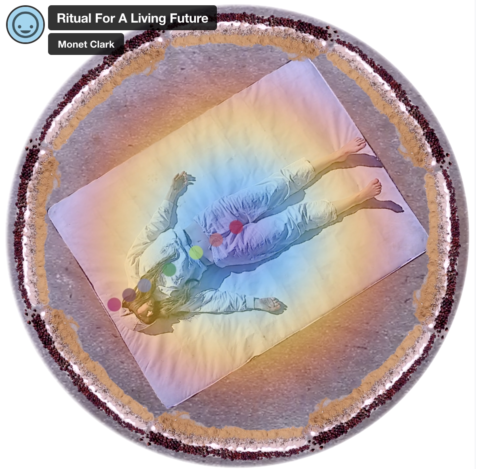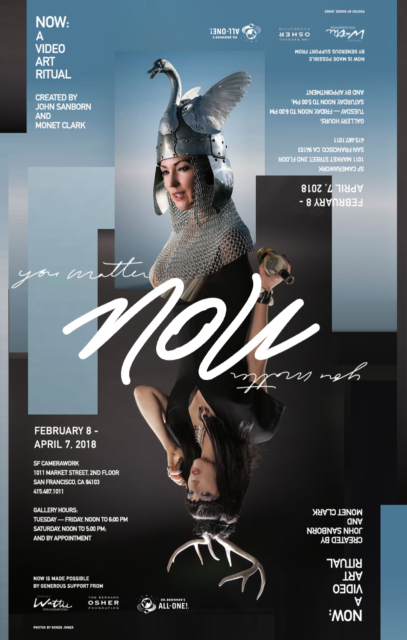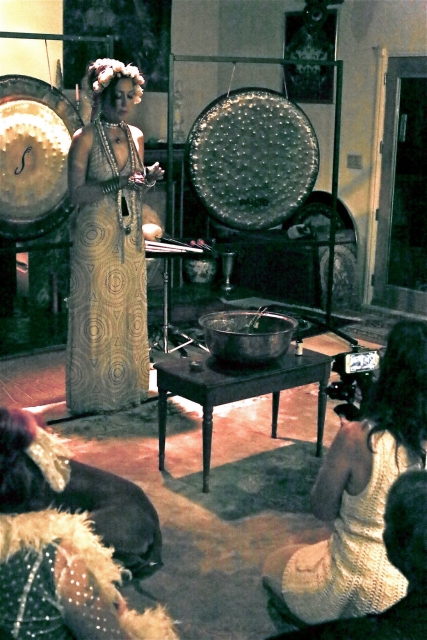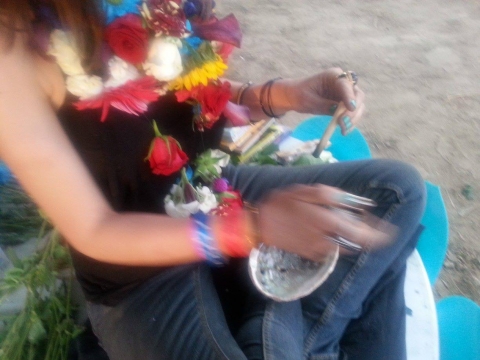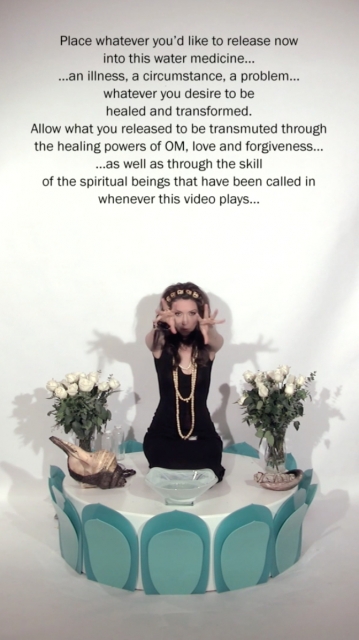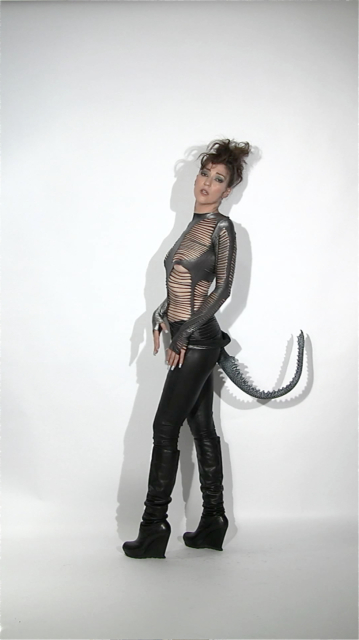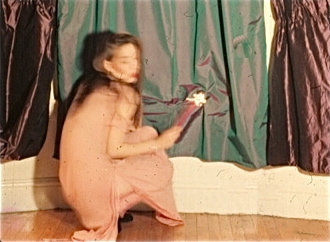“…Clark’s healing rituals stand in a class of their own…” –Jillian St. Jacques, Afterimage, Journal of Media Arts and Cultural Criticism, Vol. 44 #4
Clark’s ritual performances challenge the influence of western patriarchal ideologies on critical theory and contemporary feminist discourse. They stand in contrast to these ideologies which separate parts from the whole, lack cognizance of the sentience of nature and animals, and which dismiss the mystic. Her current works in process, the Völva Saga series, examine the connection between these cultural biases, misogyny and climate change. Her ritual performances point to the inherent politics, sexism, racism and corporate corruption reflected in the marginalization and suppression of the methods she uses within them. This includes holistic theory, naturopathic and mind/body medicines, energetic flower essence remedies, psychic readings, energetic healing, sub-atomic physics and a cultural melting pot of traditional spiritual practices with a focus on their fundamental commonalities. All of these she was exposed to at length growing up in California’s counterculture, as well as from her own her tri-racial ancestry, and her minor in Holistic Theory at SFSU. However, it was the rigorous training through her 12 year recovery from a neuro-immune illness and near death experiences, which deepened her skills at energetic and spiritual transmutation.
Fundamentally these pieces seek to remedy the separation of the mind and spirit from the body; symptoms from their cause; the energetic from the physical; the conscious from the subconscious; humanity from nature; the masculine from the feminine; individuals and eco-systems from each other, etc. They emphasize the impact of the micro on the macro and interconnectivity.
They further function as a portrait of California subculture and with them, at times she humorously satirizes politically correct social etiquettes, as well as what she calls spiritual correctness. However within the works there is an ernest intention to emphasize individual impact within a global perspective, and to transmute negativity.
“In the performance/video DAKINI (2011)…her ritualistic gestures place her in a place of vulnerability once more….because she is dealing in spirituality, that most conflicted of stances, regarded with skepticism in artistic and intellectual circles…”
“As I have argued, an aesthetic of risk runs high throughout Clark’s oeuvre, and, when combined with acts of spiritualism, her pieces become a sort of spiritual wager, acts of faith that testify to the potential of unverifiable powers to alter or shift our rational, visible, material order….”
“Since the late 1800’s when Sir James George Frazer and Marcel Mauss, following in Emile Durkheim’s structuralist footsteps, began formally excavating the social praxis of magic and religion, scholars have remarked on the apparent “need” for scientists to disavow the roots of their own, honorable family tree in such disreputable branches as poetry and alchemy. In this dysfunctional binary relationship, magic and spirituality have long been positioned as the abject “others’ of science, disavowed as inferior on many levels: less smart, less rational, less provable, less profitable.”
“Returning to [French psychoanalytic theorist Julie] Kristeva, science vs spiritualism presents another abject binary of sacred vs. profane, wherein lofty scientific brains protect their sacred order by deriding their profane, magical others as throwbacks to a primitive era. As noted Romanian theological scholar Mircea Eliade observes in The Sacred and the Profane: The Nature Religion (1959)…’ “man” shouldn’t have been in such a hurry to give his spiritual legacy away…’ [Yet] its dangerous to traffic in binaries when referring to abject discourse, as binary oppositions are overly reductive and exclusive…the liminal edge of feminist art is not masculine art, but rather an interstice where sexual politics are negotiated alongside the process of sexual subjectivation in general. Like the dysfunctional paradigm of science vs magic, feminist critique did not remain locked in binary oppositions… instead, feminism continues to offer a deeply emergent and nuanced critical discourse that analyzes force relations in which all are imbricated and imbricating….health vs. sickness is another reductive binary that seems perilous for artist to engage often resulting in didactic work…In that regard Clark’s performative healing rituals stand in a class of their own…”
—Excerpts from: DANGEROUS DAKINI: MONET CLARK’S BUNNY GIRL AND OTHER PRECARIOUS PERFORMANCE VIDEOS, by Jillian St. Jacques, Afterimage, The Journal of Media Arts and Cultural Criticism, Vol. 44 #4, 2017
